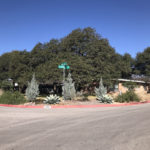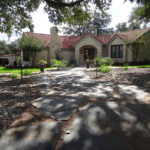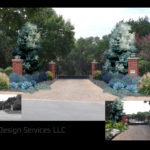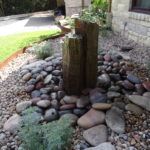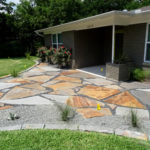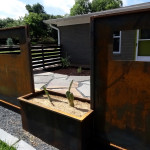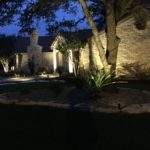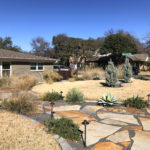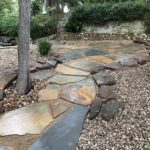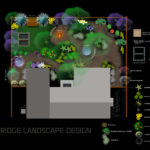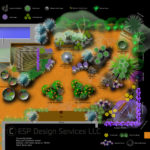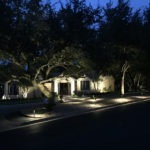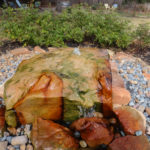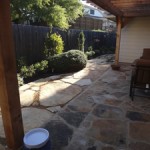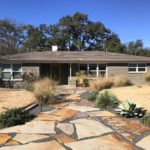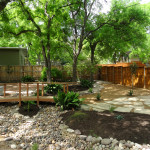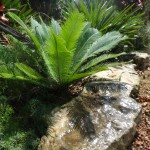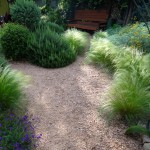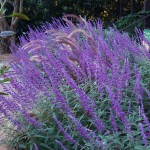
Pampas grasses (Cortaderia selloana) are great if you have the space, and really animated when a breeze catches them (they look like water fountains or firework explosions) – just don’t get too close, they are sharper than a really sharp thing. Pampas is a large perennial grass native to Brazil, Argentina and Chile. It grows in large clumps eight to ten feet high, bearing in late summer silvery-white or pinkish silken plumes which rise to a height of 12 feet.
The plumes of pampas grass are highly prized for indoor decorations. Plumes used for this purpose should be cut as soon as they have fully emerged. They can be used in dried arrangements immediately after harvesting or dried by hanging upside down and used later. If mature plumes are brought indoors, they will fill the home with delicate fluffy flowers which can be a bigger problem than a shedding dog or cat. This shedding can be prevented by spraying mature plumes with hair spray.
Remember the earth that I excavated to create the cactus and succulent bed? well, I mounded and sculpted a hill from it down the left side of the lot. I planted three Pampas grasses on the top, you can barely see this hill now (the Pampas almost totally cover it). The elevation of the grasses makes the plants look even more enormous than they already are and creates a really dramatic effect especially when they are back lit from the setting sun. A lot of people cut this grass back like other ornamental grasses in the Winter – I used to, but now I just get in there with my bio-hazard suit on and just pull the old dead growth out – it does just fine and retains its’ stature and blooms for interest through the cold months. I learnt a lesson trying to trim one of these monsters back- never purchase battery operated “anythings” for use in the yard! – they just don’t “cut it”, even a local pawn shop refused to take my battery powered shears!
I probably have more ornamental grasses than anything else in my yard – I realized early on that my west facing lot was great for back-lighting – the grasses were a natural selection for centre stage. My favorite planting combination are grasses paired with broad-leaf tropicals – banana, canna, loquat, elephant ear etc.
The burgundy Cannas contrast the blue-green of the exploding Dwarf Miscanthus.
The red blooms on the Cannas reflect the ‘hot seats’ – and believe me they do get
extremely hot, good thing the pond is close by. I used the same color on the chairs
as I did on the shed for continuity and because that was the only can of paint I had
left in the shed. We use the hay as a foot table until it turns sour, then it
makes a good mulch.
Other show-offs right now:
Ornamental Kale’s and Cabbages are finally finished – they seemed
to last forever this year. The heart of this one looks like coral.
And this one was infested with Harlequin Beetles! – great looking
but very destructive, this one went straight into the trash. Interestingly
the little blighters left the purple cabbages well alone. . . mmmmm.

I painted this green pepper with some
more of that paint I had left over!.
This one was a great shape and for
some reason very spicy.
This was one lumpy green Anole! another Notre Dame contestant.
Found in Southeastern USA, Cuba, Jamaica, and other Caribbean
islands. Only the green anole is native to the U.S.
Stay Tuned for:
“The Microcosmic Garden”
All material © 2009 for eastsidepatch. Unauthorized
intergalactic reproduction strictly prohibited, and
punishable by late (and extremely unpleasant)
14th century planet Earth techniques.












